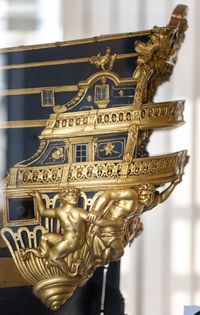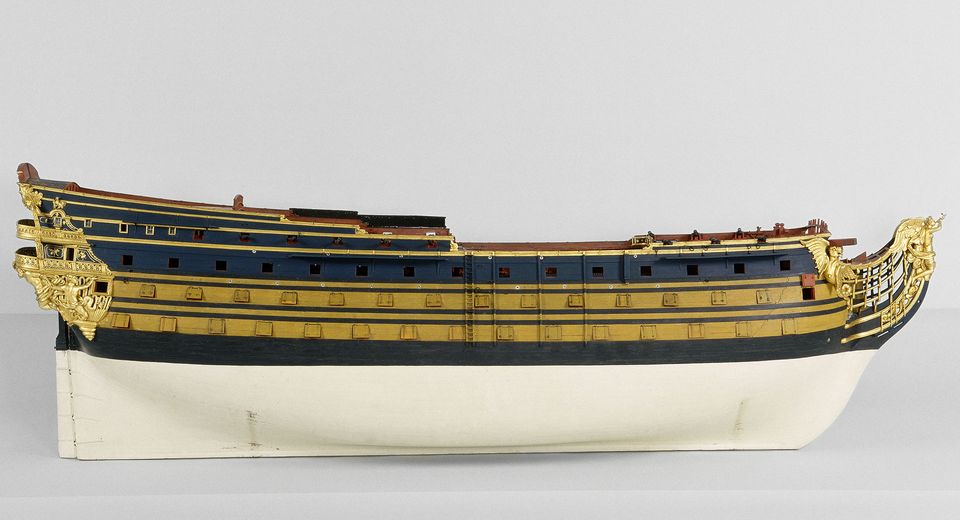Dauphin Royal
Rochefort - Hôtel de Cheusses/Arsenal
Commissioned from Rochefort’s naval shipyard, the Dauphin Royal was the model of an ideal vessel as conceived by the highest levels of government in the mid-18th century. It stands out for its wealth of decoration, in keeping with its intended owner, Louis, Dauphin of France (1729-1765), Louis XV’s eldest son.
An ideal vessel
 Enlarge image : Dauphin Royal
Enlarge image : Dauphin Royal
The model of the Dauphin Royal holds a special place in the Rochefort museum’s collections, as much for the context in which it was created as for the richness of its decoration. It does not refer to a ship that was actually built but instead represents an ideal vessel, as imagined by the highest levels of government in the mid-18th century.
A royal commission
It was commissioned from Rochefort in 1751 by the Secretary of State for the Navy, for Louis XV’s eldest son. It was intended for the Dauphin’s naval education; he was 22 years old at the time and set to become France’s next king. The commission was of great importance to Rochefort, as is evident from the part played by government representatives in the model’s creation. The Commander of the Navy, Macnémara, and the Intendant, Le Normand de Mézy, approved the plans, which were designed by the engineer and shipbuilder Groignard, who also oversaw the model’s construction. Completed after almost a year’s work, the model was sent to the Louvre’s Navy Room in 1752.
Lavish decoration
The Dauphin Royal is a 3-deck vessel armed with 110 cannons. Originally, it was provided with rigging and sails and decorated with flags. It stands out in particular for the wealth of its decoration, on prow and stern alike, in keeping with its intended owner, whose coat of arms are represented on the model. Although naval decoration was usually rather less grandiose on ships built in the mid-18th century, the Dauphin Royal’s sculpted ornamentation is reminiscent of the style popular under King Louis XIV, whose ships were designed to assert his greatness at sea. The Sun King’s emblem was also added to the transom. Nonetheless, the model is still an illustration of the fact that the Navy was a political instrument and had a part to play in the training of future sovereigns.
Collection highlight
The essential works to see during your visit to the Musée national de la Marine in Brest, Port-Louis, Rochefort, Toulon, and soon in Paris.



